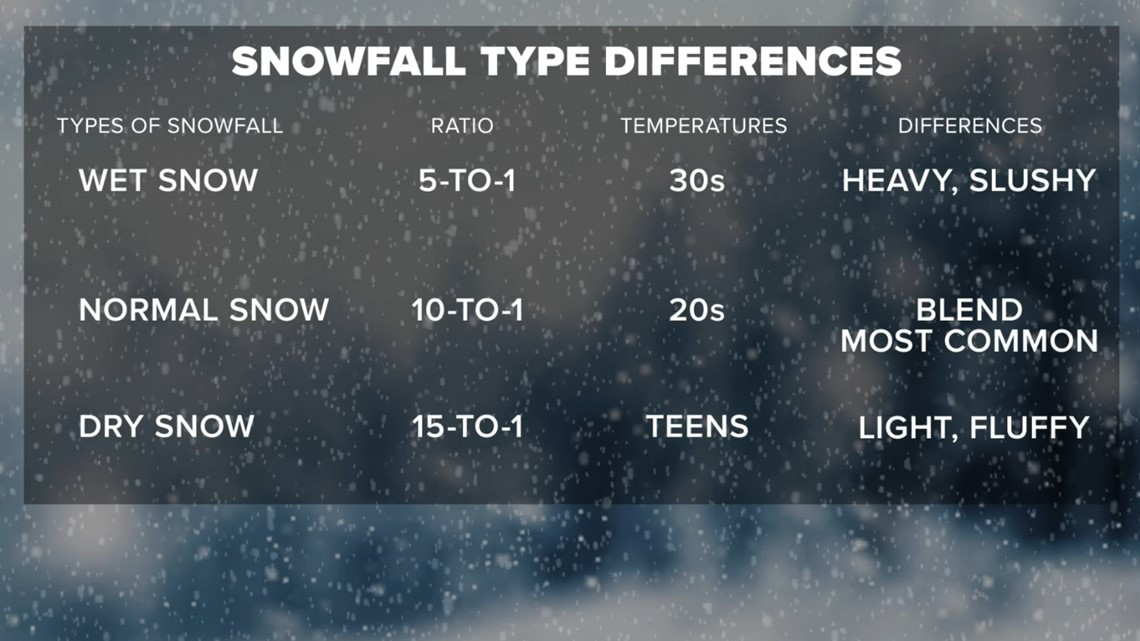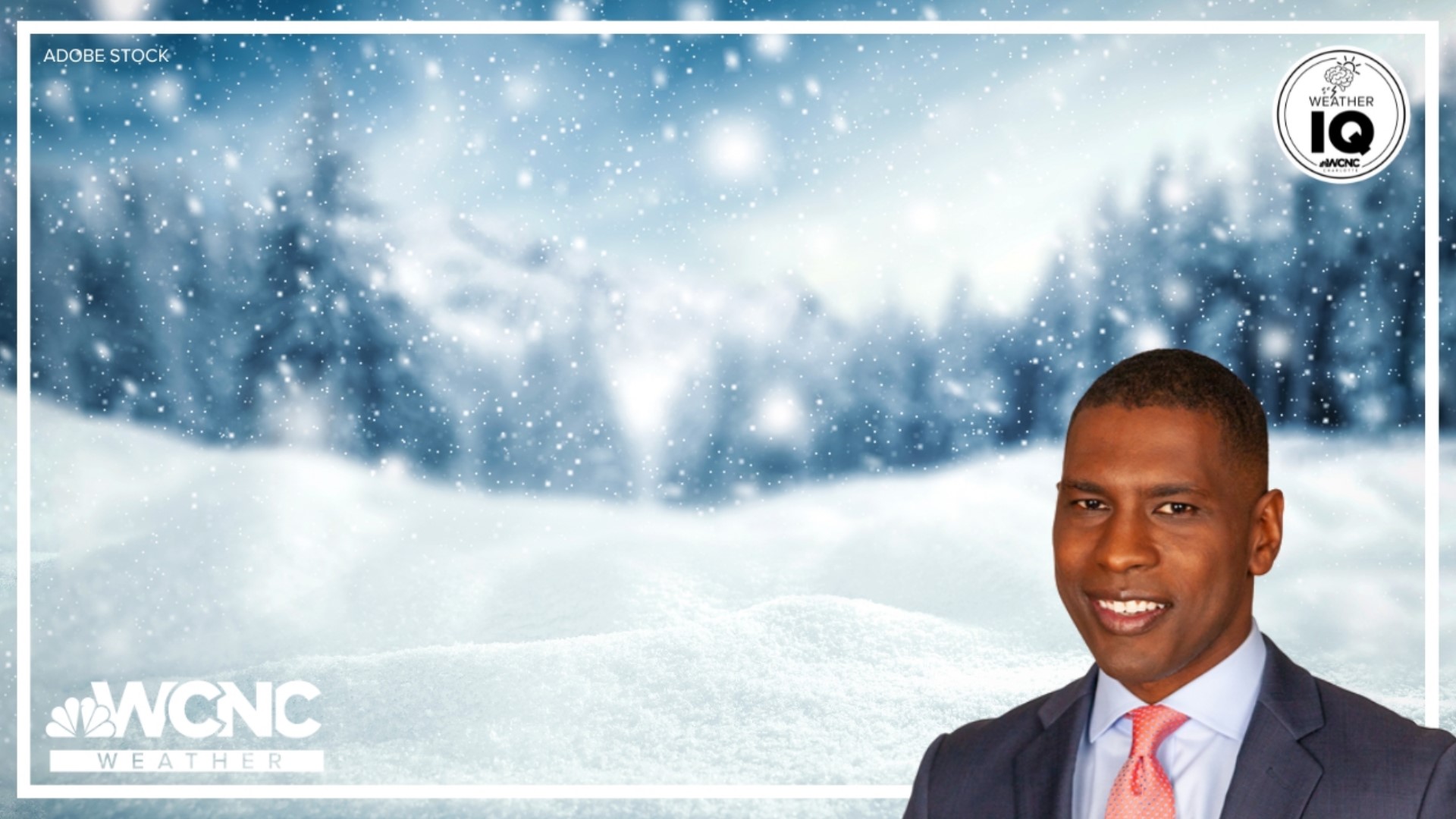CHARLOTTE, N.C. — With a more active weather pattern, there’s a good chance we could see snow in the Carolinas this winter.
Snow of any kind is a sight for sore eyes here in the Carolinas, but when it falls you might not think about what kind is actually coming down. There's wet snow, dry snow and normal snow, which is the most common. Think of that one as a blend of wet and dry snow.
Not all snow is created equal. Can you build a snowman with it? That comes down to these factors:
Amount of liquid content
Temperatures at snowfall
Wet snow: Denser, snowman, snowball
Dry snow: Lighter, sledding, blows easily.
Atmospheric temperature profile
With wet snow, temperatures aloft are near or just above freezing (32°) as snow falls to the surface. Dry snow stays below freezing (much colder) aloft as it falls to the ground.
Snow types and differences
Wet snow is the heaviest. It has a low snow-to-liquid ratio, as low as 5-to-1, meaning for every 5 inches of snow, there is a 1-inch liquid equivalent.
Normal snow could have a 10-to-1 ratio which would be your average between the wettest snow and driest snow. Most common in the middle of the winter and temperatures in the 20s.
Dry snow is fluffier. A good example is lake-effect snow. It has a higher snow to liquid ratio such as 15-to-1 or 25-to-1. The coldness of the air flowing over the lake can make a big difference.


Impact
Dry snow is better for driving than slushy wet snow, since wet snow compresses into ice with little pressure and water can easily form on top. In other words, dry snow offers better traction.
Wet Snow: Heavy wet snow is harder to shovel and can lead to heart attacks, cause power outages, roof damage and dangerous driving conditions.
So, when the white stuff starts falling ... it pays to “know your snow!”
Contact KJ Jacobs at kjacobs3@wcnc.com and follow him on Facebook, X and Instagram.

